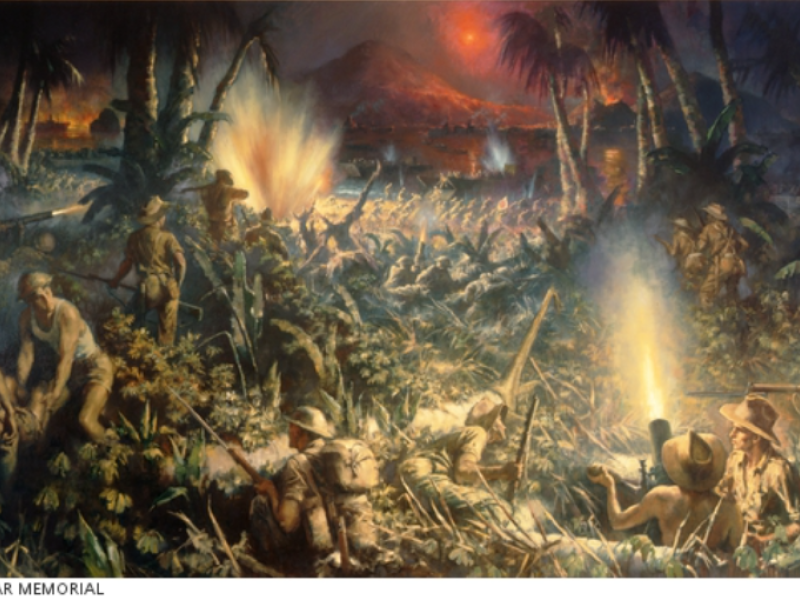Gunner Richard Vernon Grimshaw, 17th Anti-Tank Battery
Richard Grimshaw was born on 21 April 1919 in Kogarah, Sydney, to Lawrence and Amy Grimshaw.
He grew up in nearby Bexley with his parents and sister, Pam. He enjoyed playing cricket and baseball, and was a member of the Brighton-Le Sands Surf Life Saving Club.
He worked as an electrical mechanic and served in the Militia, parading part-time with the 60th Field Battery of the 18th Field Brigade.
At 21, Grimshaw enlisted for service on 19 June 1940 with the 17th Anti-Tank Battery.
He then fell ill and was in and out of hospital before finally embarking with his unit in September 1941 and landing at Rabaul in New Guinea as part of Lark Force.
They were tasked with protecting the airfields at Lakunai and Vunakanau, and the seaplane base at Rabaul.
In January 1942, the Japanese bombing began. By 22 January, 24 Squadron had been virtually destroyed and its three remaining aircraft were withdrawn. Lark Force withdrew from Rabaul, waiting on the western shores of Blanche Bay for the inevitable Japanese landings.
These began at 1am on 23 January. The Australians were no match for the Japanese invading force four times their number with overwhelmingly superior air and naval support. Realising the futility of the situation, Colonel John Scanlan ordered a withdrawal on the basis of “every man for himself”.
Over the following days, groups and individuals sought escape along New Britain’s north and south coasts via small boats or larger vessels operating from New Guinea. Around 400 members of Lark Force managed to return to Australia.
300 were rounded up and interred as prisoners of war along with 900 already captured. On 4 February, 160 Australians were massacred at the Tol Plantation shortly after their surrender.
Gunner Grimshaw was managed to avoid this fate, and was among the group of 850 military prisoners and 200 civilian internees who were ordered aboard the Montevideo Maru on the morning of 22 June.
Eight days into the voyage to Hainan, the Montevideo Maru (which had no markings to indicate it was carrying prisoners) was fired on by the American submarine, the USS Sturgeon. Two torpedoes struck the vessel, exploding the oil tank in the aft hold.
The vessel sank in 11 minutes. Barely 20 Japanese crew survived; over 1,000 others died. One surviving Japanese crewman later said that Australians in the water sang “Auld Lang Syne” to their trapped mates as the ship sank beneath the waves.
The sinking is considered the worst maritime disaster in Australia's history.
Unaware of the ship’s loss, the families of those on the Montevideo Maru continued to send letters, believing that their loved ones were prisoners of war.
Richard Grimshaw’s father died unexpectedly on 27 December 1943, still not aware of his son’s fate.
It was not until after the war that his mother and sister learnt of Richard’s death. He was 23 years old.
Duncan Beard, Editor, Military History Section
Image: “Japanese landing near Vulcan, Rabaul”, artist: Geoffrey Mainwaring, 1970
- Australian War Memorial https://www.awm.gov.au/commemoration/speeches/75th-anniversary-montevideo-maru

 Australian War Memorial
Australian War Memorial